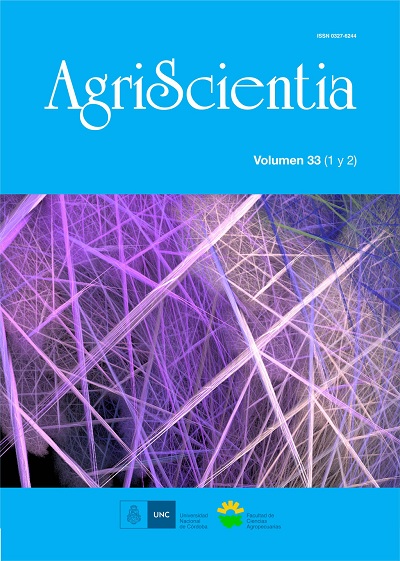Morpho-agronomic characterization of squash (Cucurbita maxima Duch.) landraces from the andean valleys in Argentina
Main Article Content
Abstract
In the Andean valleys of Argentina, families grow vegetables by traditional methods, mainly for self-consumption. Squash (Cucurbita maxima) is an American crop of great importance in Andean regional economies. These squash landraces are being lost by the rural exodus, the replacement of local varieties with commercial seeds and frequent droughts. They are reservoirs of genes of interest for improving the species and for ensuring local food security; their conservation and characterization are thus fundamental to avoiding genetic erosion. During 2005, sixty-one populations were collected from Valle Fértil, San Juan Province, and from the Argentinian northwest. Twentyseven were selected and tested for two years in the EEA INTA La Consulta, Mendoza. Forty-nine characters of plant, flower, fruit and seed were measured under a completely randomized design with three repetitions per population. Commercial cultivars Marino FCA and Veronés INTA were used as controls. The populations were grouped by fruit, seed and growth habit characters; a great morphological diversity was observed among and within populations. The work allowed selection of materials with desirable traits for improving the species.
Downloads
Download data is not yet available.
Article Details
How to Cite
Lorello, I., García Lampasona, S., Makuch, M., & Peralta, I. (2016). Morpho-agronomic characterization of squash (Cucurbita maxima Duch.) landraces from the andean valleys in Argentina. AgriScientia, 33(1), 46–59. https://doi.org/10.31047/1668.298x.v33.n1.16572
Issue
Section
Articles

